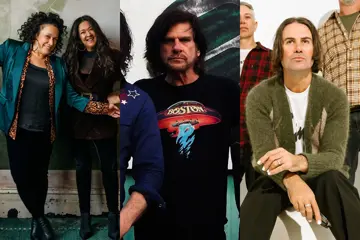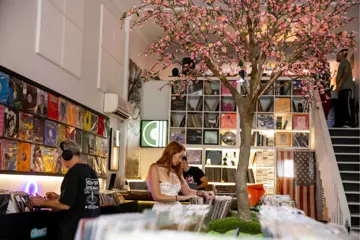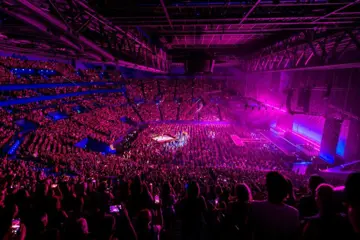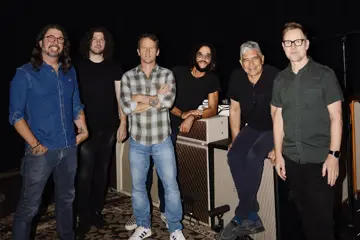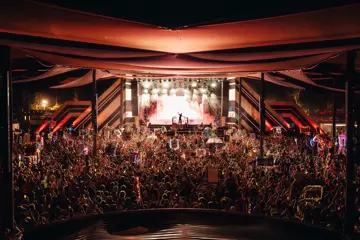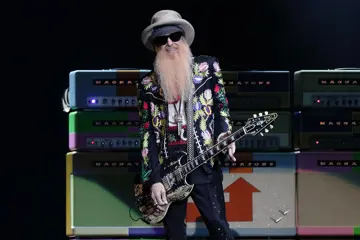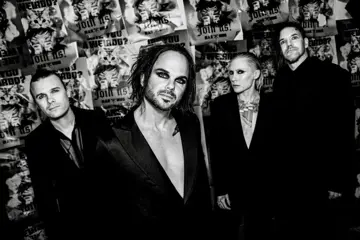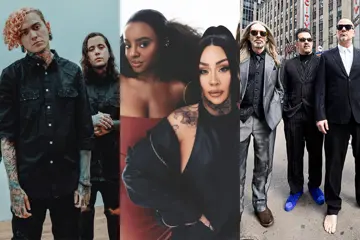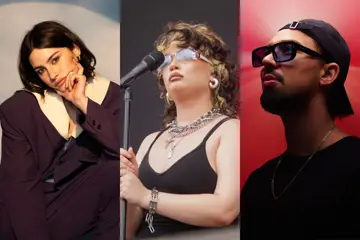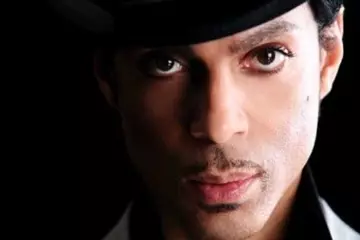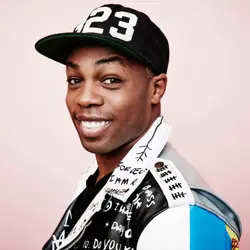 Todrick Hall
Todrick HallFew reality talent shows have left a mark on the pop culture zeitgeist as indelibly as RuPaul’s Drag Race. Since its debut in 2009, there have been ten main seasons, plus three All Stars iterations, not to mention the equally sizeable sister series Untucked, where the contestants spill the T on all the backstage drama.
In the past nine years, more than 100 queens have shantay’d to international stardom as the show has transformed into a primetime juggernaut, a fact that its many awards, including four Primetime Emmys, can attest to. RuPaul has certainly achieved his aim of elevating the art of drag into the stratosphere – there’s a reason they call her Mother (no matter what Azealia Banks might have to say about it).
But is the mammoth presence of Drag Race culture a deviation from drag culture?
As the second inductee into the Drag Race Hall of Fame, All Stars 2 Winner Alaska Thunderfuck 5000 (look it up) is uniquely qualified to comment. “Like RuPaul says, drag is the court jester who calls out the absurdity of identity. And in Hollywood, identity is king. Drag will always be an outsider art, but that’s why it’s special and necessary,” Alaska tells The Music.
Season five winner Jinkx Monsoon feels that the ‘mainstream’ presence of Drag Race is a “double-edged sword”.
“We're inviting audiences in that don't have the same history of knowledge that members of the queer community have,” says Jinkx. “I would love to see the fan base educating themselves on LGBTQAI history and culture, to have a better respect and understanding and reference point for the art form of drag.”
Don't miss a beat with our FREE daily newsletter
Todrick Hall says that he will always be a huge supporter of RuPaul and Drag Race for shining a spotlight on queer artists and bringing drag to popular appeal. A regularly returning collaborator and guest judge on Drag Race, Hall is a pop artist and the choreographer responsible for the absolutely wig-snatching gag that was the All Stars 3 finale live production number, Kitty Girl.
“I think that for decades gay people have been the real magic pixie dust behind a lot of the huge celebrity divas who have made it. I’m talking Madonna, Mariah Carey, Beyoncé, Diana Ross, Cher - [gay] people have been the driving force behind what has made these people the superstars, divas and icons that they are today. But I don’t think that the world was really ready to really give people the recognition that they deserved at that time,” says Hall.
Terms from the Drag Race lexicon like ‘yass queen’, ‘werk’ and ‘shook’ all came up in a recent survey of the most used teen slang (conducted by Facebook Messenger/YouGov Galaxy and poorly decoded by the Daily Tele).
“People think that Vogue [by Madonna] or media leaks from The Real Housewives Of Atlanta are responsible for these pop culture words and catchphrases, but it’s actually the gay men doing their hair and the gay men who are doing their make-up and styling them, teaching them how to walk.”
Lady Gaga affirmed this perspective in her much-anticipated appearance on Drag Race in season nine, telling the queens, “Gay men taught me how to be a woman.”
“Now that everybody knows who these drag queens are and they are able to go out and make careers for themselves and not be in the shadows of other people, it just is the most beautiful thing in the world and that is why I fan so hard for RuPaul,” adds Hall.
"The great thing about Drag Race is that the fans pay attention to every detail and are able to interact with it." - Alaska
As the popularity of the show and the showcased queens has skyrocketed, the fandom has intensified at an exponential rate. Social media has allowed queens to be targeted with all kinds of attention — good and bad. For seasoned drag queens, trolling is part of the experience — the digital equivalent of the noble art of "reading" (again, look it up). But the expectation has become that queens need to learn how to dish it and how to take it, and this kind of attitude has been received with mixed responses by the uninitiated.
“Social media has grown right along with the show, so it’s gotten more and more complex and ever-present. The great thing about Drag Race is that the fans pay attention to every detail and are able to interact with it. I never had anything as cool as this as a child so I can’t even imagine,” says Alaska.
Jinkx Monsoon says social media makes Drag Race stars very accessible to the fan base, and while this propagates a lot of delightful interactions, it also opens queens up to shadier behaviour: “That's kind of a tricky thing to balance. Sometimes it's hard not to engage in negativity, and that's when the online wars begin. It takes patience and discipline to avoid that.
“We all have our strengths and our faults. I want the fan base to be entertained by our art form and critique the work, not the artist,” says Jinkx, musing on what she would hope for fans to keep in mind before leaping to attack queens for their portrayal on the show. “Let the queens read each other, rather than taking it on yourself... I don't think there's ever a right time for sending people death threats over something they said or did on a reality TV show. That puts a lot of pressure on its participants."
Hall, who cultivated his own fame on YouTube before joining the hit show's roster of judges, had some advice on how queens can weather being in the eye of the Drag Race storm: “I think that you have to be a sound person before you get on this show or before you get this exposure. Everything that you have or any mistakes that you make or any feelings that you have, when you decide to become a public figure, are things that no longer only belong to you, and that’s the price that you pay for auditioning for a show like that,” he shares.
“I feel for people like Katya [who recently returned from taking a hiatus at the height of her popularity and the success of The Trixie & Katya Show, to go to rehab] or people like Miss Fame [who stood down from public appearances to maintain her sobriety]. The pressure of the show has become so much for them and the expectations have become so high for them that they’ve had to take a break.”
Alaska has her own approach to taming the beast: “[I once] heard someone describe being famous as living with a giant fire-breathing dragon. Luckily I’m not famous, I’m just popular, so my dragon is much smaller. I don’t have paparazzi outside my house or following my every move – I have lovely fans and admirers who sometimes ask me for a picture at the airport or at Sephora.”
As the Drag Race fandom continues to swell in numbers, Australia has not been immune, even if our own drag heritage is rooted in the comedy and whimsy of Priscilla Queen Of The Desert and Dame Edna Everage rather than the “fishy” pageantry and underground club kids of the US. Aside from Aussie superstar Courtney Act’s turn on season six, local queens like Karen from Finance and Art Simone have gained traction with Drag Race fans, even appearing at RuPaul’s DragCon in LA. The impact of Drag Race popularity means we’re also now seeing these homegrown queens on our screens in advertisements and on our streets at public events, and not just during Mardi Gras season. In 2016, for example, Art Simone upset conservatives when she took the reigns from Santa to lead Melbourne’s Chapel Street Christmas Parade.
And inevitably, as the fandom has grown, drag culture has diversified beyond the exclusively queer audiences it once serviced. RuPaul’s DragCon LA broke attendance records in May this year with over 50,000 people in attendance, including families with children sashaying around in drag.
A growing number of these supporters are also straight women. While drag can and has been perceived to be an insulting parody of women both cis and trans (and some of it surely has been), by and large, the show arguably dismantles ideas of inequality, highlighting how the contestants use drag to destroy the idea that femininity equals weakness.
While many are celebrating the fact that the Drag Race phenomenon is exposing more people to queer issues, the show has also been accused of commodifying drag to be more family-and hetero-friendly. Former contestants have even called out the way the show sugar-coats some of the more loaded content.
“I think the show does a great job of exploring the complexities of the art form. [However] I think there are still topics that will not be broached – queens who are sex workers, the pitfalls of drugs and alcohol and ego that come with fame,” explains Alaska.
“I would love to see the fan base educating themselves on LGBTQAI history and culture, to have a better respect and understanding and reference point for the art form of drag.” — Jinkx Monsoon
Speaking to season nine star Peppermint for her YouTube channel, season four winner Sharon Needles put it bluntly: “RuPaul’s Drag Race says we have charisma, uniqueness, nerve and talent – but the show edits out the whole coke-snorting, boyfriend-stealing, cock-sucking, shoplifting, alcoholic, asshole aspect that I think is what truly binds all drag queens together – that we live really hard lives.”
Yeah, it’s complicated. While the show is an excellent tool for exposure for the art of drag, the Drag Race phenomenon does not always echo out into the broader queer community in positive ways.
Oxxy Moron is a drag queen who works at Bar Pop in Manchester’s Canal Street, one of the UK's most popular gay scenes. She has experienced first-hand how the standards set by Drag Race can “shove the rest of the drag community under the carpet."
“When it comes to Drag Race, what so many people see is a stylized version of drag. A certain standard which puts pressure on a lot of queens – especially inexperienced queens,” Oxxy tells The Music.
“Queens are unique... However, the TV show pushes particular icons onto us, which are then applied to less well-known queens. Every weekend I hear, "You look like Adore", "You remind me of Detox", etc. It can be nice, and many times it is a compliment. However, as queens, we are an individual, not a comparison.”
Drag Race is the Olympic standard of drag, according to RuPaul at least. Your local drag bar or drag bingo night simply isn’t playing the same sport, but often, nor is it trying to. “The pool of queens has grown exponentially since the increase of diverse talent on our screens. But it's left many seeing a TV show as the main goal,” adds Oxxy.
Drag Race's dominance might appear total, but as has always been the case with pop culture, a counterculture has risen to challenge it. Dragula has emerged as a protest to the polish of Drag Race, searching for “the world’s first Drag Supermonster”. Presented and produced by legendary clubland figures The Boulet Brothers, the show could be best described as Drag Race with scary contact lenses! In an ironic twist, Drag Race producers WOW Presents will be premiering the show’s third season in September 2018.
Of course, drag existed long before RuPaul, but its future now seems inextricably bound to the direction and focus of this hit TV show. The Drag Race "type" not only sets the rules for what kind of drag is acceptable but also who can do drag, although this has undergone dramatic shifts over the past ten seasons. The show has given a platform to performers of all ethnicities and ages, shapes and sizes, aesthetics and personas that have ranged from femme or “fishy” queens to the bold and the bald, and now even the buff. However by and large contestants are cisgender gay men, or are at least portrayed as that, and the show reinforces the idea that they’re the only people who can claim ownership of drag.
Peppermint bucked this trend as the first contestant to openly enter the show as a transgender woman. Other queens have also come out as trans during or after their time on the show. Jinkx Monsoon spoke out about the assumption that being a drag queen automatically makes someone a cis-male out of drag when they came out as non-binary in 2017.
In the broader drag world drag kings (women who perform as male personas, the literal opposite to drag queens), bio queens or hyper queens (biological women who perform in heightened female drag) and performers of diverse gender identities and sexualities make up the rich tapestry of social critique and gender flipping.
But whatever shortcomings the show might suffer, the drawcard of Drag Race has never just been the typical, juicy reality TV drama (of which there is plenty, ourrrrrrkee! *tounge pop*). It's the sheer artistry and heart on show. No other reality series sees its contestants so gruellingly tested in so many skills, in addition to presenting intense stories of childhood trauma, personal growth, and workroom conversations about very real, very serious issues.
Drag Race might not always get everything right all of the time, and it might sometimes put us through garbage - like the Breastworld skit — and let us never forget the eternal dumpster fire that was season seven's Romy And Juliet. But like so many of our favourite shows and cultural treasures, we can still embrace it for all the wonderful things it brings to the table while casting a stern side-eye to its more problematic facets. Drag (and Drag Race) is here to stay, and it will only get more fierce.
Todrick Hall's America: The Forbidden Tour, plays across Australia from 10 Jun. The Alaska Show tours from 20 Sep. Jinkx Monsoon tours with In The Dark's Comedy Queens from 24 Aug.
Special thanks to Stephen Craddock, owner of In The Dark Presents, for facilitating interviews.

